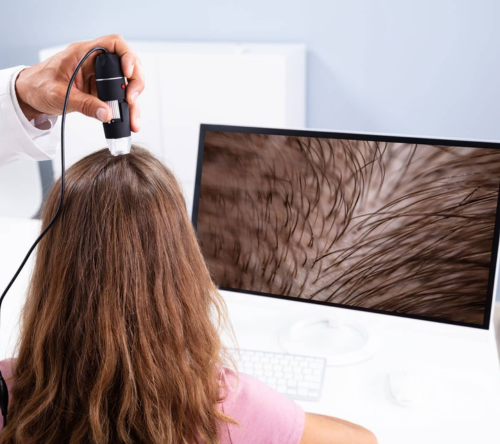
Our doctor scrapes samples from the skin or from a few hairs plucked from the scalp to examine the hair roots under a microscope. This can help determine whether an infection is causing hair loss. Light microscopy. Our doctor uses a special instrument to examine hairs trimmed at their bases.If the hair loss diagnosis or hair loss analysis shows your hair loss comes from anything other than male or female pattern baldness, the doctor will seek out the cause through various tests.

In some cases, you may have an underlying condition that needs to be treated before you can begin hair restoration. Here are some of the hair loss diagnosis or hair loss analysis tests you can expect your doctor to perform at your first visit if you hair loss is not due to pattern baldness.










































What is involved in a hair loss analysis?
A hair loss analysis typically involves a thorough examination of the scalp, a review of medical history, and, in some cases, laboratory tests or diagnostic procedures. The goal is to identify the type and cause of hair loss.
How is the type of hair loss determined during analysis?
The type of hair loss is often determined through a combination of visual examination, medical history review, and sometimes additional diagnostic tools such as trichoscopy or scalp biopsies.
What are common causes of hair loss that are identified during analysis?
Common causes include androgenetic alopecia (genetic hair loss), telogen effluvium (stress-related hair shedding), alopecia areata (autoimmune hair loss), hormonal changes, nutritional deficiencies, and underlying medical conditions.
Is hair loss analysis painful or invasive?
Hair loss analysis is typically non-invasive and painless. It involves visual examination, questioning about medical history, and may include blood tests or other diagnostic procedures, depending on the specific case.